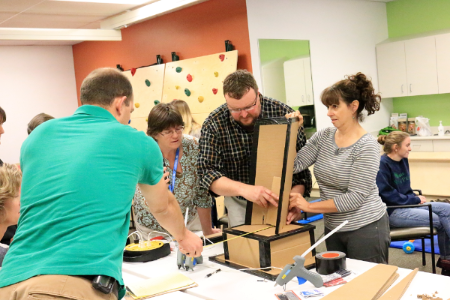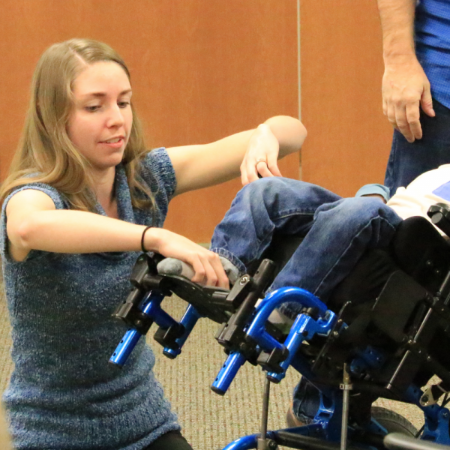Statewide Training Teaches Low-tech Assistive Technology Techniques

low-tech assistive technology for children
Low-tech Assistive Technology Trainings
Roosevelt: February 26
Uintah Basin Technical College
Price: March 29
Utah State University, Price
Roosevelt: March 30
Utah State University, Blanding
Representatives from the Center for Persons with Disabilities went to St. George earlier this month to spread the word about low-tech assistive technology, and help train professionals on how to make their own.
Assistive technology is any device or system that allows people with disabilities to be more independent. Low-tech assistive technology is a subject that deserves more respect, said Clay Christensen, one of the presenters at the event.
In today’s world, when so many high-tech solutions are available for people with disabilities, the low-tech ones get overlooked, even though they can be inexpensive, super-customized and easy to use. For example, Justin Bernard's young son had low muscle tone, so the boy was unable to sit on the floor. The family used a customized stroller for their son, but while it helped with positioning it was hard to transport and took up a lot of space. They came to the training so that the participants could learn to build a device that would help families like theirs: a lightweight, customized and inexpensive chair that could be easily carried and would fit in tight spaces.
Christensen taught a room-full of physical therapists, occupational therapists, speech-language pathologists and educators how to make a little chair out of strong but lightweight cardboard material, hot glue and tape. He also helped them brainstorm solutions for people with disabilities.
Professionals from the Disability Law Center and the Utah Center for Assistive Technology also presented at the event.
Christensen credits much of his own AT training to Amy Henningsen, an Up to 3 occupational therapist who is one of the pioneers of the Assistive Technology Lab at the Utah Assistive Technology Program. The lab and UATP are part of the CPD at Utah State University.

custom-made chair will fit him.
For example, she remembers a young man who was in first grade more than 15 years ago. "While other children were learning the basics of handwriting, it was not an option for him," she said. "His fluctuating muscle tone hindered his fine motor control so he was unable to write. With a modified keyboard holder which allowed him somewhere to rest his forearms, he was accurately able to use his index finger to practice 'writing' his letters just like the other children were doing." Other low-tech adjutments helped him to sit properly and to rest his feet on the ground.
Today, that young man who struggled to write is a mechanical engineering student. Looking back, Henningsen wonders if, without the assistive technology that made it possible for him to use a keyboard, he would have spent a large part of his educational experience working on handwriting—a skill that he struggles with to this day. He could have spent a lot of time trying to master a skill rather than maximizing his engineering abilities.
Christensen said it was inspiring for him to watch Henningsen in action, earlier in his career. “She can problem-solve pretty quickly. … This comes from the years that she’s been doing it, and the fact that she really cares.”
Now, Christensen and other assistive technology professionals are spreading the word about low tech solutions. Both Christensen and Henningsen said the low-tech AT approach is still eye-opening to many of the professionals they train, and it can bridge those gaps that prevent people with disabilities from reaching their full potential.
The workshop in St. George was one of several that will be offered throughout the state. The trainings are funded through the Interagency Outreach and Training Initiative.

